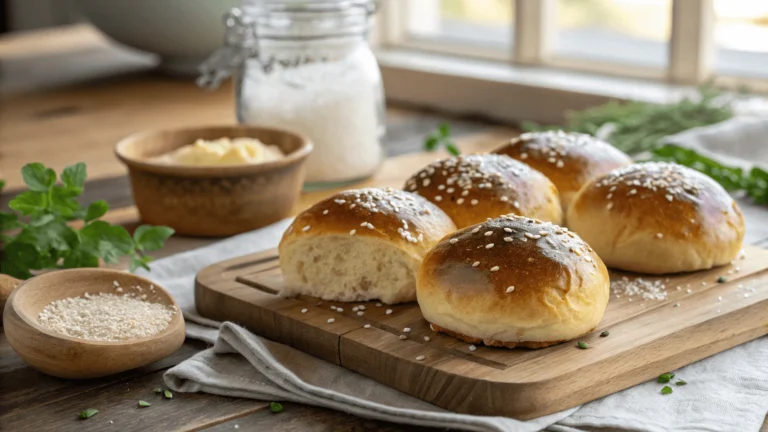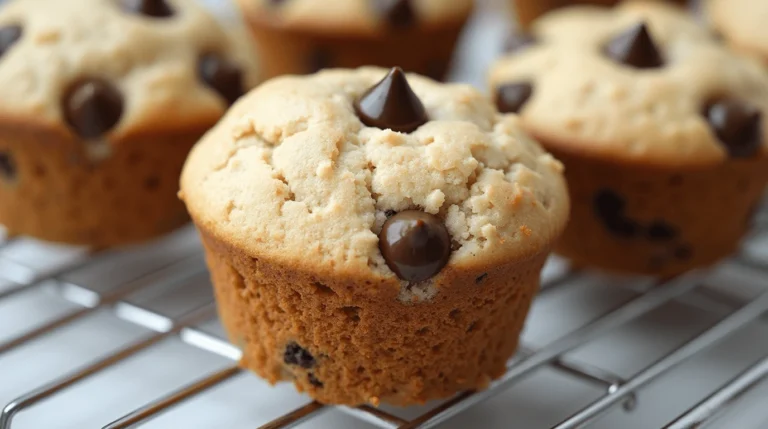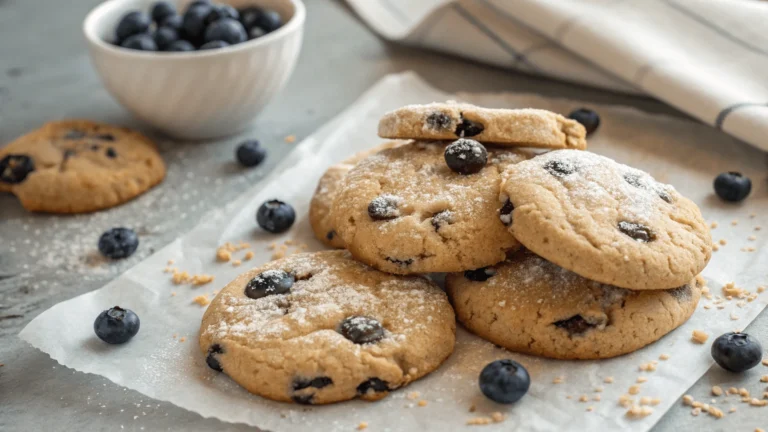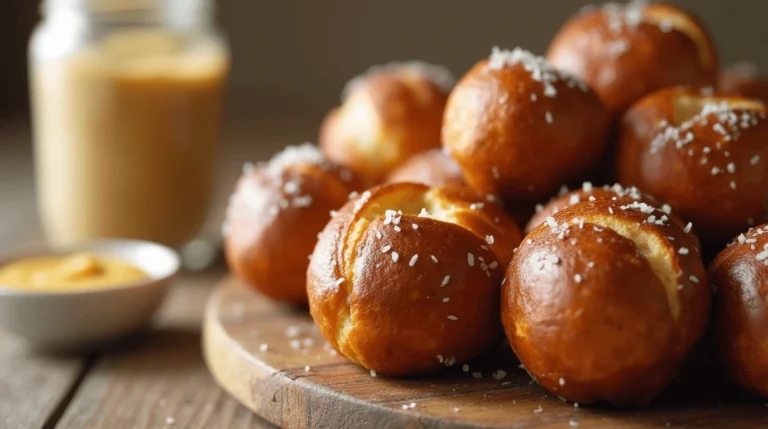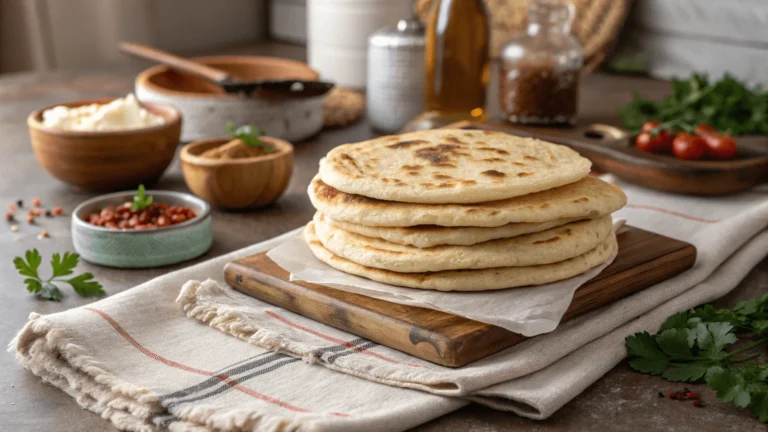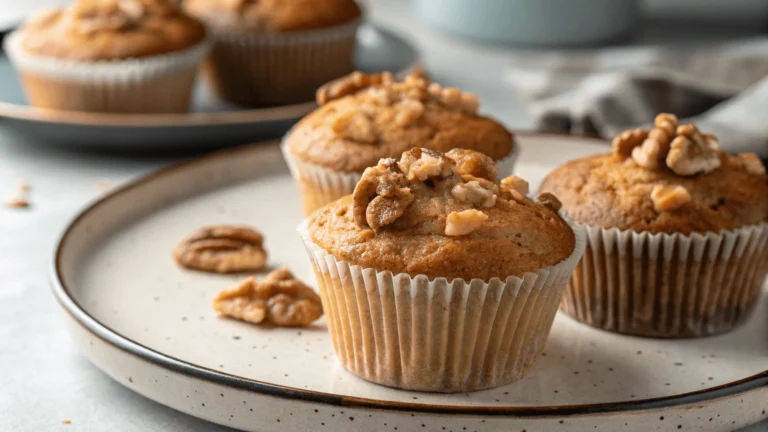Quick and Crispy Sourdough Discard Focaccia Recipe.
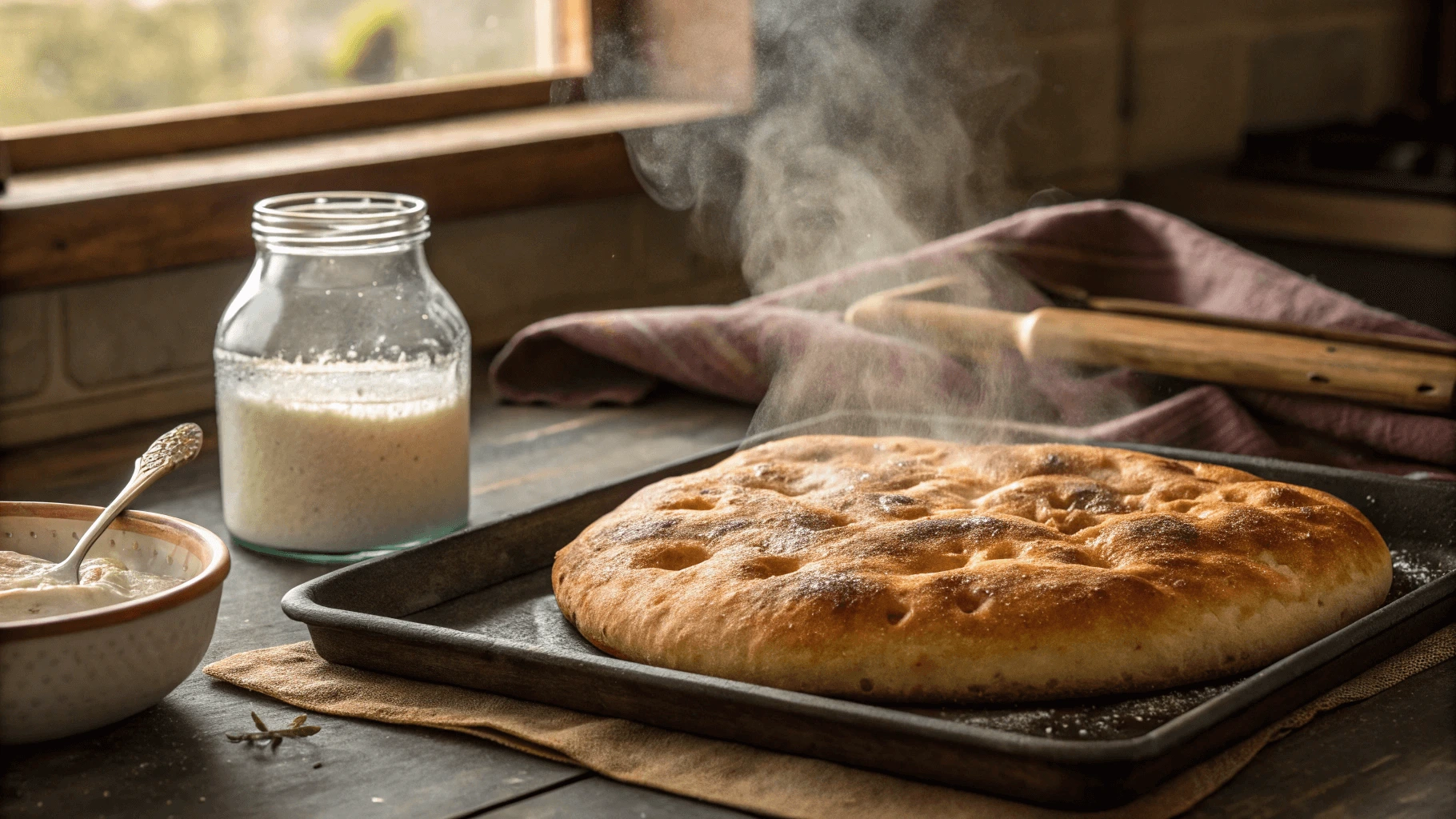
Imagine pulling a sheet pan from your oven, revealing a bubbling, golden-brown focaccia with a shatteringly crisp crust and a tender, airy crumb, infused with the subtle tang of sourdough. Now, imagine achieving this masterpiece not despite, but because of something many bakers toss away: sourdough discard. Welcome to the sustainable magic of transforming sourdough discard into a restaurant-quality Sourdough Discard Focaccia recipe. This isn’t just baking; it’s a delicious act of resourcefulness.
In this comprehensive guide, you’ll unlock the secrets to crafting an unbelievably delicious Sourdough Discard Focaccia. We’ll delve into understanding discard, mastering starter care, equipping your kitchen, and following a simple, step-by-step recipe. Our key promise? To deliver a straightforward, utterly delightful Sourdough Discard Focaccia recipe that not only saves you money but also champions zero-waste baking in your kitchen. Prepare for an artisan bread experience that’s both satisfying and sustainable.
Table of Contents
Understanding Sourdough Discard: What It Is and Why It Matters
Before we dive into dimpling dough, let’s appreciate the humble origins of our star ingredient. Understanding sourdough discard elevates your baking from simply following steps to truly connecting with the process.
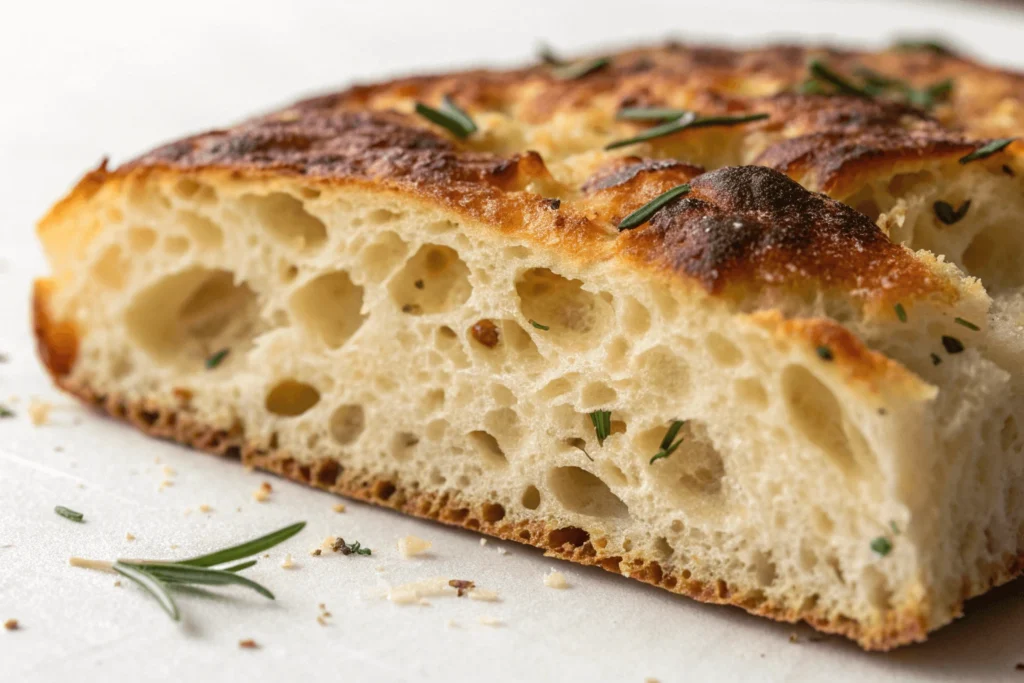
The Science Behind Sourdough Discard
- Definition of Sourdough Discard: Sourdough discard is simply a portion of your established sourdough starter that you remove before its regular feeding. It’s not “bad” or “inactive”; typically, it’s just unfed starter that has likely peaked in activity and begun to recede. It contains the same wild yeasts and beneficial bacteria (primarily Lactobacillus species) as your active starter, just often in a more acidic environment and with less immediate leavening power.
- Microbial Processes in Sourdough Fermentation: Your starter is a bustling ecosystem. Yeasts consume sugars in the flour, producing carbon dioxide (which makes bread rise) and ethanol. Bacteria also consume sugars, primarily producing lactic acid and acetic acid. These acids contribute the characteristic sour flavour and help preserve the bread.
- Why Bakers Typically Remove a Portion of Starter: Discarding serves several purposes:
- Manage Volume: Without discarding, your starter would grow exponentially, requiring vast amounts of flour and water.
- Maintain Microbial Balance: Removing a portion helps keep the yeast and bacteria populations vigorous and prevents the environment from becoming overly acidic, which can inhibit yeast activity.
- Control Feeding Ratios: It ensures you’re feeding a manageable amount of starter with fresh flour and water, promoting optimal activity.
Essential Equipment for Perfect Sourdough Discard Focaccia
While Sourdough Discard Focaccia is relatively low-fuss, having the right tools makes the process smoother and ensures better results. You don’t need a professional bakery setup, just a few key items.
Kitchen Tools Checklist
- Mixing Bowls: A large bowl (at least 4-quart capacity) is essential for mixing the dough and allowing it room to rise. A second, smaller bowl can be helpful for proofing or holding toppings. Glass or ceramic bowls are great as they don’t react with the acidic dough.
- Baking Sheets: A sturdy, rimmed baking sheet (like a half-sheet pan, roughly 18×13 inches) is ideal. The rim contains the olive oil and prevents spills. A dark-coated pan can promote better browning on the bottom. Consider a 9×13 inch pan for a thicker focaccia.
- Parchment Paper: Absolutely crucial for preventing sticking and ensuring easy cleanup. Line your baking sheet generously.
- Measuring Tools:
- Kitchen Scale (Highly Recommended): Baking by weight (grams) is far more accurate than by volume (cups), especially for flour and discard. Consistency is key in baking.
- Measuring Cups and Spoons: If you don’t have a scale, use standard US measuring cups and spoons. Be sure to level your flour correctly (spoon it into the cup, then level off, don’t scoop directly from the bag).
Quality Ingredient Selection
The simplicity of Sourdough Discard Focaccia means ingredient quality shines through:
- Choosing the Right Flour:
- All-Purpose Flour: Unbleached all-purpose flour is the workhorse here, providing good structure and a tender crumb. Look for one with a moderate protein content (around 10-12%).
- Bread Flour: Can be substituted for a chewier texture due to its higher protein content. You might need slightly more water.
- Whole Wheat/Other Flours: You can substitute a portion (e.g., 20-30%) of the all-purpose flour with whole wheat or rye for added flavor and nutrition, but this will affect hydration and density. (See FAQ).
- Salt Varieties: Use non-iodized salt. Sea salt (fine or flaky for finishing) or kosher salt work best. Salt controls fermentation and enhances flavor significantly.
- Olive Oil Selection: Use a good quality Extra Virgin Olive Oil (EVOO). Its flavour is prominent in focaccia. You’ll use it in the dough, for coating the pan, and for drizzling on top. Don’t skimp here!
- Herb and Topping Recommendations:
- Classic: Fresh rosemary sprigs, coarse sea salt.
- Others: Thyme, oregano, thinly sliced garlic, olives, cherry tomatoes (halved), thinly sliced onions or shallots, sun-dried tomatoes. Get creative! (More ideas in the Variations section).
Feeding and Storing Your Starter
- Feeding Schedules: Most starters thrive on a regular feeding schedule.
- Room Temperature (Active Use): Typically fed once or twice daily (every 12-24 hours) when being actively used for bread baking.
- Refrigerated (Less Frequent Use): Can be fed once a week. Allow it to warm up and potentially receive an extra feeding or two before using for leavening, but the discard can often be used straight from the fridge (allow it to come to room temp first for this recipe).
- Storage Temperatures:
- Room Temperature: Around 70-78°F (21-26°C) encourages vigorous activity.
- Refrigerator: Around 38-40°F (3-4°C) significantly slows fermentation.
- Signs of a Healthy Starter:
- Bubbles and a noticeable rise after feeding (doubling or more is common).
- A pleasant, slightly tangy or fruity aroma (not overly sour, acetone-like, or unpleasant).
- A somewhat thick, batter-like consistency (depending on hydration).
The Ultimate Sourdough Discard Focaccia Recipe
Get ready to transform that discard into a crispy, chewy, flavourful flatbread. This Sourdough Discard Focaccia recipe is designed for simplicity and deliciousness.
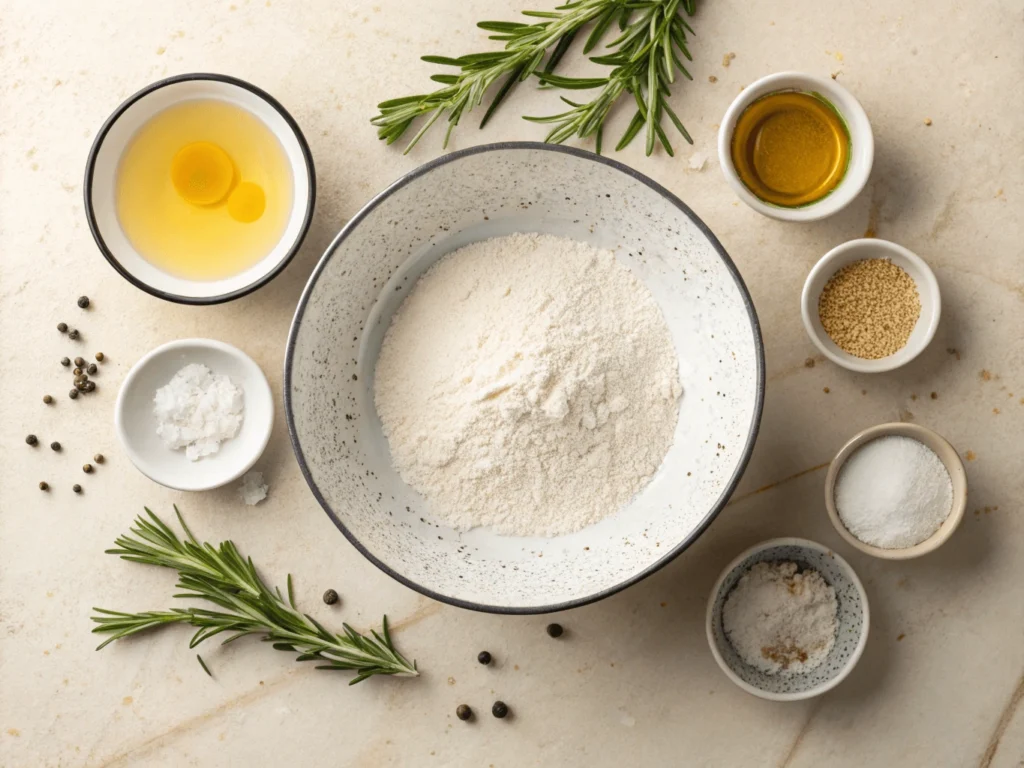
Ingredients Table
| Ingredient | Quantity | Notes |
| Sourdough Discard | 1 cup (approx. 240g) | Room temperature, ideally 100% hydration |
| All-Purpose Flour | 2½ cups (approx. 300g) | Unbleached preferred. Adjust slightly based on discard consistency. |
| Olive Oil | ¼ cup (50g) + more | Extra virgin recommended. Plus extra for pan and drizzling. |
| Salt | 1½ tsp (9-10g) | Fine sea salt or kosher salt. |
| Water | ½ cup (118g) | Lukewarm (around 80-90°F or 27-32°C). |
| Herbs / Toppings | As desired | Fresh rosemary, coarse sea salt are classic. |
| Optional: Sweetener | 1 tsp (4g) Sugar/Honey | Helps kickstart fermentation slightly, adds subtle flavour (optional). |
Instructions for Sourdough Discard Focaccia Recipe
Mixing the Dough:
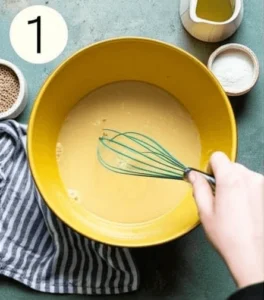
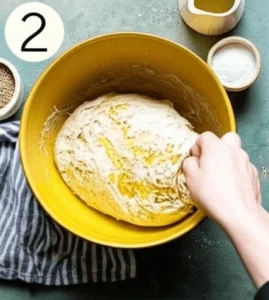
- In a large bowl, combine the sourdough discard, lukewarm water, ¼ cup olive oil, and optional sweetener (if using). Stir well to break up the discard.
- Add the all-purpose flour and salt.
- Mix with a sturdy spoon, spatula, or your hands until a shaggy dough forms and no dry flour remains. The dough will be quite sticky – this is normal for focaccia! Avoid adding extra flour unless absolutely necessary.
First Fermentation (Bulk Rise):
- Cover the bowl tightly with plastic wrap or a reusable cover.
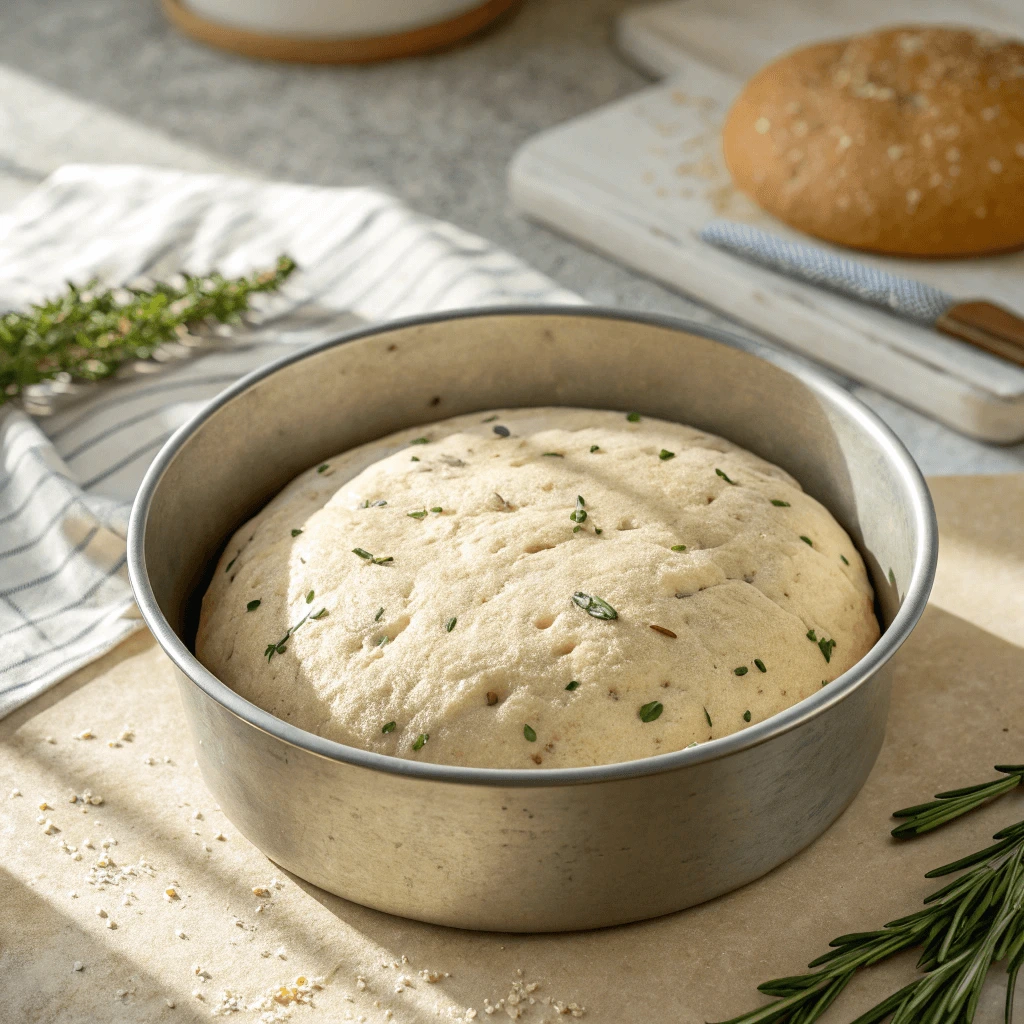
- Let the dough rise at warm room temperature (ideally 75-80°F / 24-27°C) for 3-5 hours. The dough should become noticeably puffier and may almost double in size. The timing depends heavily on your discard’s activity and room temperature. Optional: Perform 2-3 sets of “stretch and folds” (see Expert Techniques) during the first 1-2 hours to build strength.
Second Fermentation (Proofing in Pan):
- Generously coat your chosen baking sheet (e.g., 9×13 inch or a half-sheet pan) with 2-3 tablespoons of olive oil. Ensure the bottom and sides are well-oiled.
- Gently scrape the dough out of the bowl onto the oiled pan. It will be sticky.
- With oiled hands, gently stretch and press the dough outwards towards the edges of the pan. If it resists, cover it and let it rest for 15-20 minutes, then try stretching again. Aim for an even thickness.
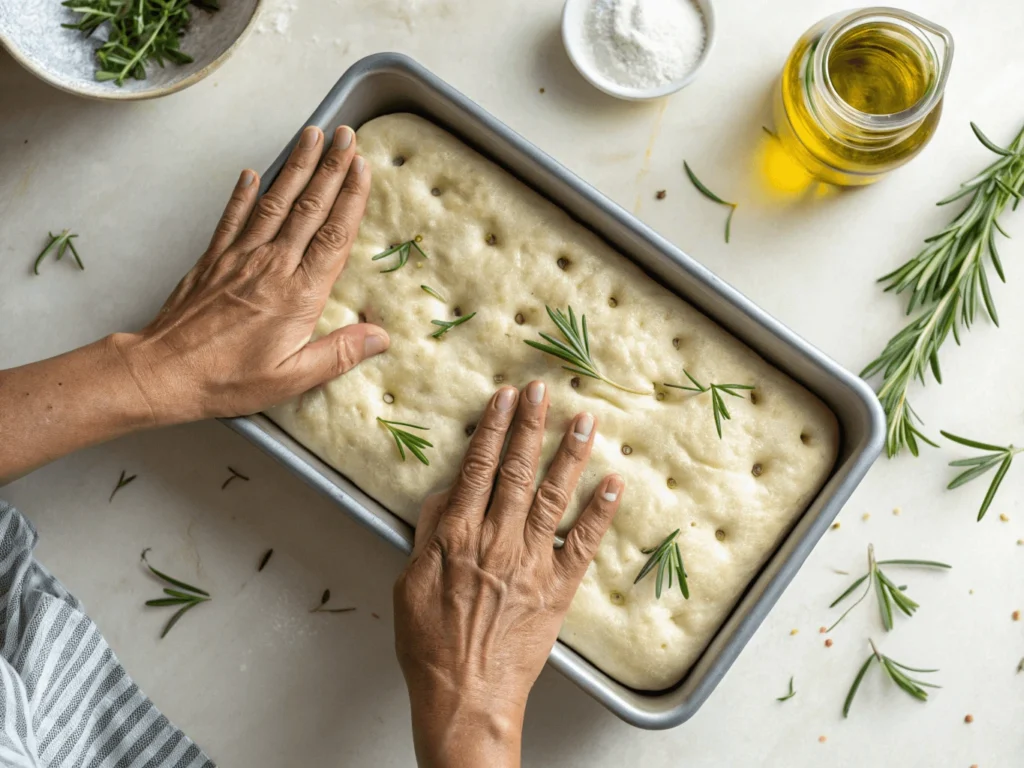
- Cover the pan loosely with plastic wrap or place it inside a large food-safe bag.
- Let the dough proof at room temperature for another 1-2 hours, or until puffy and jiggly when the pan is gently shaken. Alternatively, you can refrigerate the covered dough at this point for a longer, cold proof (8-24 hours) for potentially more complex flavour development. If cold-proofing, let it sit at room temperature for 1-2 hours before baking.
Dimpling and Topping:
- Preheat your oven to 425°F (220°C). Place a rack in the middle position.
- Drizzle another 1-2 tablespoons of olive oil over the surface of the proofed dough.
- With oiled fingertips, firmly press down into the dough, creating deep dimples all over the surface. Press all the way down to the bottom of the pan – this creates focaccia’s signature texture and prevents huge air bubbles.
- Sprinkle generously with your chosen toppings: fresh rosemary sprigs, flaky sea salt are classics. Add olives, tomatoes, garlic, etc., if desired.
Baking Instructions:
- Carefully place the baking sheet into the preheated oven.
- Bake for 20-30 minutes, or until the Sourdough Discard Focaccia is deeply golden brown on top and the edges are crispy. Baking time may vary depending on your oven and pan size (thicker focaccia may need longer).
- If the bottom isn’t browning well, you can place the pan directly on the oven floor or a lower rack for the last 5 minutes (watch carefully to prevent burning).
- Once baked, carefully remove the pan from the oven. Let the focaccia cool in the pan for 5-10 minutes, then use a spatula to transfer it to a wire rack to cool completely. This prevents the bottom from steaming and getting soggy. Slice and enjoy your amazing homemade Sourdough Discard Focaccia!
Expert Baking Techniques and Pro Tips for Sourdough Discard Focaccia Recipe
Elevate your Sourdough Discard Focaccia recipe from good to great with these techniques.

Hydration and Dough Handling
- Understanding Dough Hydration: Hydration refers to the ratio of water (and liquid discard) to flour by weight. Focaccia is typically a high-hydration dough (often 70-80%+). This recipe, factoring in the discard and added water, sits at a relatively high hydration level, contributing to its open, airy crumb and moist texture. High hydration doughs are sticky but yield superior results for focaccia. Resist adding too much extra flour.
- Stretching and Folding Methods: This technique builds dough strength without traditional kneading, crucial for high-hydration doughs.
- How to do it: During the first rise, with damp hands, reach under one side of the dough, gently stretch it upwards, and fold it over the top towards the opposite side. Rotate the bowl 90 degrees and repeat 3 more times (total of 4 folds per set).
- Benefits: Develops gluten structure, incorporates air, and equalizes dough temperature. Doing 2-3 sets spaced 30 minutes apart during the first 1.5 hours of bulk fermentation significantly improves the final texture of your Sourdough Discard Focaccia recipe.
- Achieving Perfect Texture: The combination of high hydration, gentle handling (especially during panning), deep dimpling (creating pockets for oil and uneven texture), and sufficient baking time is key to the classic contrast between a crisp crust and a soft, chewy interior.
Troubleshooting Common Focaccia Challenges
- Preventing Soggy Bottoms:
- Use enough olive oil in the pan – it essentially “fries” the bottom crust.
- Ensure your oven is fully preheated.
- Bake on a middle or lower rack for better bottom heat.
- Consider using a dark metal pan.
- Transfer the baked Sourdough Discard Focaccia recipe to a wire rack shortly after baking.
- Managing Oven Temperatures: Every oven is different. An oven thermometer can verify your temperature accuracy. If your focaccia browns too quickly, lower the temperature slightly (by 25°F/15°C) midway through baking. If it’s too pale, increase the temperature slightly for the last few minutes or bake longer.
- Achieving Crispy Edges: Ensure the dough reaches the edges of the well-oiled pan. The hot oil contact creates crispiness. Don’t be shy with the oil around the perimeter. A longer bake time also contributes to overall crispness.
Variations and Creative Toppings for Your Sourdough Discard Focaccia Recipe
While the classic rosemary and sea salt Sourdough Discard Focaccia recipe is divine, feel free to experiment!
Herb and Seasoning Combinations
- Classic Italian Herb Blend: Combine dried oregano, basil, thyme, and rosemary. Sprinkle on before baking. Add some red pepper flakes for a kick.
- Mediterranean-Inspired Toppings: Kalamata olives (pitted and halved), crumbled feta cheese (add in the last 10 minutes of baking), sun-dried tomatoes (oil-packed, drained), fresh oregano.
- Seasonal Variation Suggestions:
- Spring: Asparagus ribbons, fresh peas, lemon zest.
- Summer: Cherry tomatoes (halved), fresh basil (added after baking), sliced zucchini.
- Autumn: Thinly sliced apples or pears, caramelized onions, sage leaves, walnuts.
- Winter: Roasted garlic cloves, thinly sliced potatoes (par-cooked), hearty greens like kale (massaged with oil).
- Other Ideas: Everything bagel seasoning, parmesan cheese, thinly sliced jalapeños, prosciutto (added after baking).
Vegan and Gluten-Free Adaptations
- Vegan: This Sourdough Discard Focaccia recipe is naturally vegan as written (assuming no honey is used). Ensure toppings are plant-based.
- Gluten-Free Adaptations: This is more challenging as sourdough discard contains gluten.
- Using GF Discard: If you maintain a gluten-free sourdough starter, you can use that discard.
- Flour Options: Substitute the all-purpose flour with a high-quality gluten-free all-purpose blend that contains xanthan gum. Be aware that GF doughs handle differently – they are often more batter-like and may require adjustments to water content and baking time. The texture will differ from traditional focaccia.
- Plant-Based Topping Recommendations: All the veggie and herb options above work well. Use nutritional yeast for a cheesy flavour.
- Nutritional Considerations: GF flours vary widely in nutritional content.
Frequently Asked Questions (FAQ) about Sourdough Discard Focaccia
1. Can I use whole wheat flour in this Sourdough Discard Focaccia recipe?
Yes, you can substitute part of the all-purpose flour (e.g., 50-100g or about ½ to ¾ cup) with whole wheat flour. Whole wheat absorbs more water, so you might need to add an extra tablespoon or two of water to achieve the right sticky consistency. It will result in a denser, nuttier-flavoured Sourdough Discard Focaccia recipe.
2. How long does sourdough discard last in the refrigerator?
Unfed sourdough discard can be stored in an airtight container in the fridge for 1-2 weeks. It will become more acidic over time. Always smell it before using; discard if it smells unpleasantly strong, vinegary, or shows any signs of mold.
3. What if my Sourdough Discard Focaccia recipe turns out too dense?
Density can result from several factors:
* Under-proofing: The dough didn’t rise enough during the first or second fermentation. Ensure it looks puffy and jiggly.
* Not Enough Hydration: The dough was too dry (perhaps too much flour was added, or the discard was very stiff).
* Old/Inactive Discard: While discard doesn’t provide primary leavening here, very old discard might contribute less flavour and structure.
* Using Too Much Whole Wheat/Heavy Flour: These flours naturally create denser results.
4. Can I make this Sourdough Discard Focaccia recipe without a stand mixer?
Absolutely! This recipe is specifically designed to be easily mixed by hand using a bowl and a spoon/spatula or your hands. No stand mixer is required. The stretch and fold technique helps develop gluten without intensive kneading.
5. How do I know when my Sourdough Discard Focaccia is perfectly baked?
Look for visual and auditory cues:
* Color: Deep golden brown across the top surface and around the edges.
* Edges: Should look crispy and slightly pulled away from the sides of the pan.
* Sound: If you gently tap the surface, it might sound slightly hollow (though this is less reliable with enriched breads like focaccia).
* Internal Temperature (Most Accurate): Use an instant-read thermometer inserted into the center; it should register around 200-210°F (93-99°C).
Conclusion and Key Takeaways
You’ve now journeyed through the rewarding process of creating a spectacular Sourdough Discard Focaccia recipe. This recipe is more than just a way to use up starter discard; it’s a testament to the principles of zero-waste baking – transforming a humble byproduct into an artisan bread that’s both incredibly delicious and environmentally conscious. By embracing this approach, you save money, reduce kitchen waste, and connect more deeply with the craft of baking.
We’ve covered everything from understanding your discard and starter health to mastering the techniques for achieving that perfect crispy-on-the-outside, chewy-on-the-inside texture. Remember the key takeaways: use quality ingredients, embrace the sticky high-hydration dough, don’t skimp on the olive oil, dimple deeply, and bake until gorgeously golden.
Don’t be afraid to experiment with toppings and flavour variations. This Sourdough Discard Focaccia recipe is a fantastic canvas for your culinary creativity. We encourage you to bake, taste, and make it your own!
Additional Resources
To continue your sourdough and artisan bread journey:
- Suggested Follow-Up Recipes:

